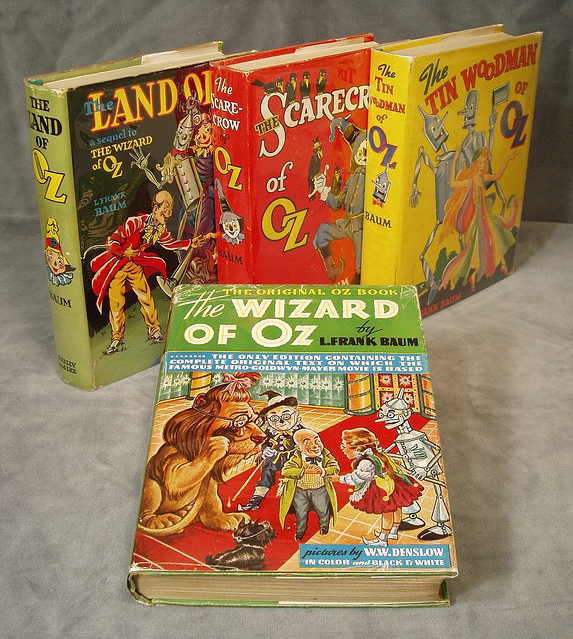 Baum's American Fairy Tales was published in 1908, but it is actually an expanded and updated version of American Fairy Tales from 1901. Three stories were added, and the book was re-illustrated with 16 two-color plates by George Kerr. The publisher was the Bobbs Merrill company, who had already published several Baum books, and had the rights to the older Baum titles published by the defunct George M. Hill company.
Baum's American Fairy Tales was published in 1908, but it is actually an expanded and updated version of American Fairy Tales from 1901. Three stories were added, and the book was re-illustrated with 16 two-color plates by George Kerr. The publisher was the Bobbs Merrill company, who had already published several Baum books, and had the rights to the older Baum titles published by the defunct George M. Hill company. The original edition of the book was rather elaborately produced, with 24 full page drawings and decorative borders on every page. But there are no color plates, and the drawings are by a variety of artists, which lends a somewhat uneven quality.
The original edition of the book was rather elaborately produced, with 24 full page drawings and decorative borders on every page. But there are no color plates, and the drawings are by a variety of artists, which lends a somewhat uneven quality. The 16 new illustrations in the new edition provide a more cohesive look to the book. Of course there is the rather obvious flaw on the cover drawing - the boy's hand is clearly backwards, or else his arm is being brutally twisted!
The 16 new illustrations in the new edition provide a more cohesive look to the book. Of course there is the rather obvious flaw on the cover drawing - the boy's hand is clearly backwards, or else his arm is being brutally twisted! George Kerr is interesting for having contributed to several books in the Oz style, such as Bobby in Bugaboo Land, and The Golden Goblin. He was involved in a notorious divorce case in 1907-1909, and continued his career into the 1940's.

























































